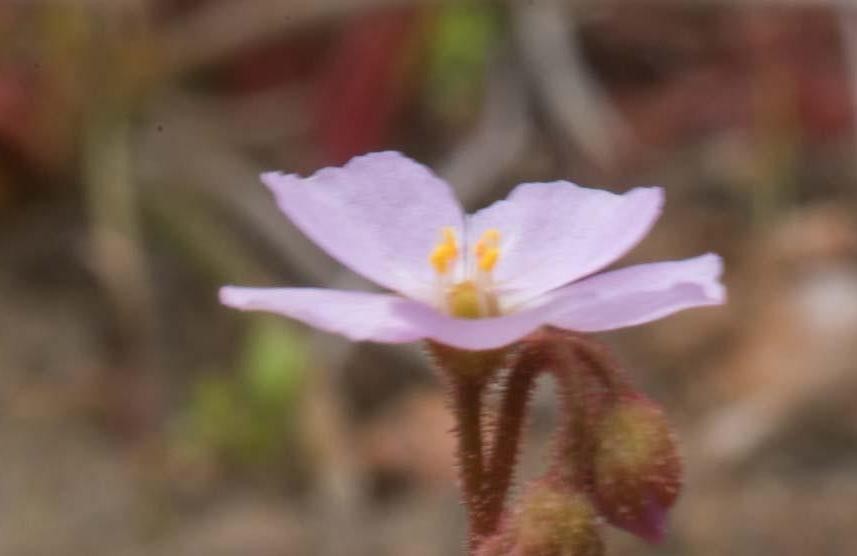Sundews
(Drosera falconeri)

Description
Drosera falconeri is a carnivorous plant in the genus Drosera. It is endemic to the Northern Territory of Australia. Drosera falconeri superficially resembles the Venus flytrap (Dionaea muscipula). In a review of the research on the evolution of the Venus flytrap from sticky-leaved ancestors, botanists Thomas Gibson and Donald Waller use D. falconeri as an example of a sticky-leaved species that shares many characteristics with the Venus flytrap, such as a wide petiole and lamina, and faces the same challenge of prey escape that the snap trap of the Venus flytrap evolved in response to. Drosera falconeri is a tropical perennial plant with a rosette body plan that is common for the genus Drosera. Deciduous leaves lay flat against the soil. Leaves are usually smaller at anthesis (flowering), but increase as the growing season progresses. Typical reniform lamina at maturity are 1.5 cm (0.6 in) long and 2 cm (0.8 in) wide, with leaves on older specimens being as wide as 3 cm (1.2 in). It is unique in the subgenus because of its large leaves that are typically flat against the soil. Retentive mucilage-producing glands held on stalks – structures known as tentacles – appear on the margin of the lamina with shorter glands in the center of the leaf. The abaxial (underside) surface of the leaf is noticeably veined and sparsely covered with non-glandular white hairs. Petioles are oblanceolate and usually 10 mm long with varying widths: 2 mm near the center of the rosette, 3.5 mm near the center of the petiole, and 3 mm at the point of attachment to the lamina. The upper surface of the petiole is glabrous, but the margins and lower surface possess hairs similar to those of the abaxial leaf surface. One or two racemose inflorescences are produced per plant and are usually 8 cm (3.1 in) long. Approximately 12 flowers are found on one inflorescence with each white or pink flower held on a 3–5 mm long pedicel. The scape, inflorescence, and sepals are sparsely covered in white hairs. Flowers are composed of elliptic 3 mm long by 1.8 mm wide sepals, 7 mm long by 4 mm wide petals, five 2.7 mm long white stamens that produce orange anthers and pollen, a 1.1 mm diameter ovary with bilobed carpels and three white 2.5 mm long styles that are extensively branched toward the apex with terminal white stigmas. It typically flowers from November to December with only one flower open at a time, lasting for just one day whether it was pollinated or not.
Taxonomic tree:







